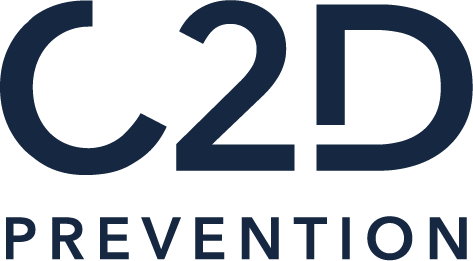WORKSHOP
Mental Load
The Hidden Enemy

Revealing the invisible to prevent errors: understanding, experiencing, and regulating cognitive overload at work
What if errors weren’t caused by lack of skills, motivation, or even material conditions, but rather by the excess of invisible mental demands?
In our complex, fast-paced, and information-saturated environments, cognitive overload has become one of the main causes of accidents, inattentiveness, chronic stress, and performance breakdowns.
Yet, it is rarely identified, almost never named, and hardly ever addressed adequately.
The “Invisible Mental Load” workshop offers a unique deep dive into this phenomenon: not just through explanations, but by allowing participants to experience, feel, measure, and deconstruct it, using cognitive scenarios specifically designed to surprise the brain.
The goal: turn a passive burden into a controlled skill.
OBJECTVE
Understand the impact of mental load on daily life and safety, and learn how to manage it.
CONTENT
- Practical exercises simulating mental overload and raising awareness of associated risks
- Topics covered:
multitasking, brain functioning, invisible pressures - Strategies to train the brain and stay safe
FORMAT
- Coaching : interactive discussions, role-playing
MAKE PREVENTION A REFLEX!
REGISTER YOUR COMPANY NOW
and ensure a safer work environment for everyone!
Format & Target Audience
The “Mental Load” workshop is delivered in person, with personalized guidance from a trainer specialized in behavioral safety.
Target audience:
All employees, operators, supervisors, managers, and executives.
Recommended group size:
6 to 12 participants to ensure strong engagement, personalized trials, and high-quality exchanges.
Learning Objectives
- Understand the cognitive mechanisms of mental overload beyond common clichés
- Experience firsthand the impact of attentional clutter on performance
- Identify one’s own early warning signs before exhaustion or loss of vigilance occurs
- Decode systemic and organizational causes of invisible mental load
- Learn to relocate one’s attention at critical moments
- Implement effective, realistic cognitive decompression strategies
- Strengthen decision-making abilities
in complex or highly demanding situations
Teaching Methods
- Applied neuroscience
- Visual tools
- Group coaching
depending on available time
Workshop Programme
1Programmed Error: Deliberately Challenging the Brain
“I knew what to do, but I did the opposite.”
Participants face an extremely simple task… made impossible.
Not due to lack of skills, but because they must perform it under intentionally degraded cognitive conditions:
auditory distractions, random interruptions, and contradictory dual instructions.
Goal : demonstrate in real time the gap between intention, knowledge, and action in an overloaded environment.
2Anatomy of Mental Overload
Based on participants’ experiences, we analyze what happened inside the brain:
- Prefrontal cortex saturation
- Attentional selection bias
- Tunnel vision, narrowing of perceptual field
- Accumulation of unconscious tasks (silent mental load)
- Executive saturation and decision fatigue
- But more importantly: what could have been anticipated, delegated, or structured differently.
3Mapping Invisible Pressures
In small groups, participants conduct a reverse investigation into the hidden causes of their daily mental overload:
- Weak links (notifications, emails, background noise)
- Implicit pressures (judgment, performance, lack of recognition)
- Multiple conflicting roles (colleague / manager / expert / support / HR relay, etc.)
They create their own map of cognitive interferences.
4Working on Micro-Anticipation
Unlike conventional approaches focused on “time management” or “prioritization”, the workshop introduces a micro-anticipation approach:
- What moments, signals, and situations increase my load?
- Where am I most cognitively vulnerable?
- How can I create a personal relief ritual that works in my actual work environment?
Each participant develops a “mental short-circuit code”: a personal protocol for conscious, voluntary mental interruption.
5 Effective Regulation Strategies
Participants explore practical and accessible tools:
- Prioritization techniques (Eisenhower matrix, Pareto principle, etc.)
- Refocusing rituals and cognitive break routines
- Simplified communication methods and clarification of instructions
- Collective task flow management to limit interruptions
6 Final Simulation: Attention Management Under Pressure
Participants must manage a multitasking activity with changing instructions, shifting roles, and incomplete information.
The goal isn’t to successfully complete the task, but to:
- Detect when the cognitive load tips over
- Decide what to consciously let go
- Set limits without guilt
- Activate pre-planned “cognitive countermeasures”
Why choose this Workshop ?
Because mental load is invisible, rarely discussed, but it wears people down and creates vulnerability.
In a hyperconnected world of continuous pressure, the brain has become a high-risk area.
This workshop offers a radically different approach from traditional stress management or time management training.
It transforms the perception of invisible risk into an active skill of cognitive regulation.
Conclusion & Call to action
The “Invisible Mental Load” workshop is simultaneously a physical, emotional, and intellectual experience.
It provides participants with concrete benchmarks, lasting tools, and a new understanding of their professional environment.
It fits perfectly into a human risk prevention strategy, workplace well-being initiatives, or organizational safety programs.
Contact us today to design a version tailored to your business challenges and corporate culture.
